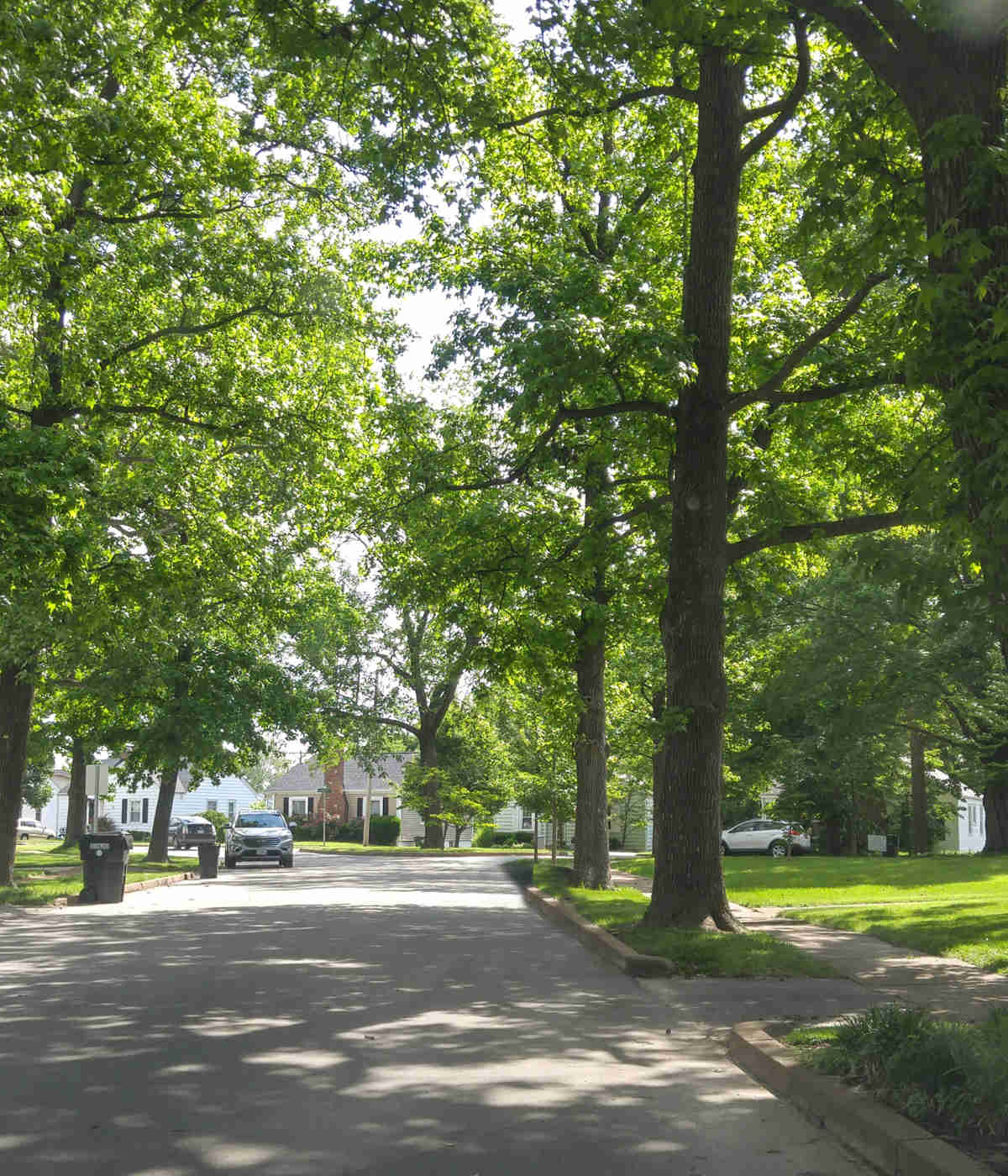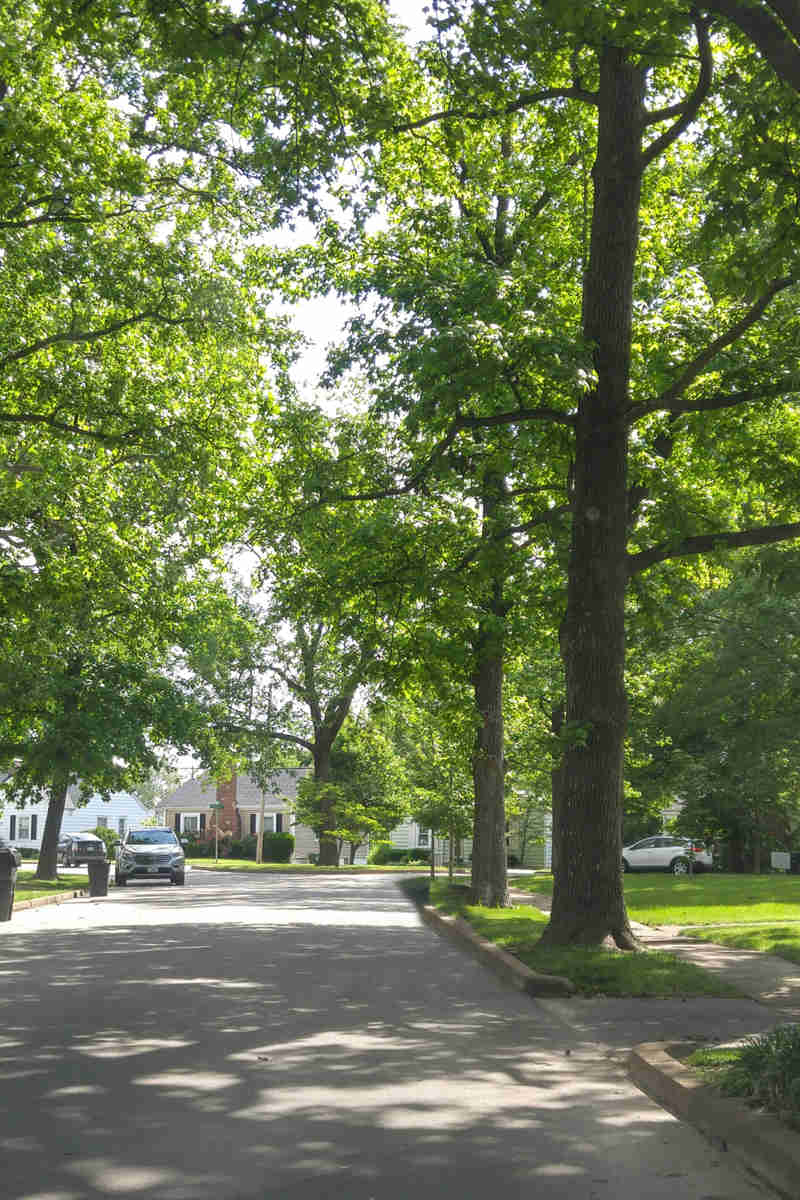Summers in Massachusetts have become hotter and drier in recent years, with an increase in the frequency of drought advisories. With more frequent drought conditions comes a larger risk of heat stress on the trees in your yard.
Many signs of heat stress, like patch leaf color and early leaf drop, appear too late or are mistaken for fall leaf changes. Identifying tree heat stress symptoms and knowing how to help heat-stressed trees can give your trees a better chance of surviving the coming colder months.
September is the last window to help trees recover before winter! Schedule a late summer inspection with a local arborist in Needham, Danvers, or Concord before it’s too late!
Common Signs of Heat-Stressed Trees in Massachusetts
Signs of tree stress in summer often mimic the transitional phase of dormancy that trees go through in the fall. If your trees exhibit the following symptoms too early in the season, there is a chance they are suffering from heat stress.
- Leaf Scorch or Browning Edges – This symptom resembles sunburn, characterized by crisped leaf margins. It’s especially common in maples, dogwoods, and birch trees.
- Early or Patchy Leaf Color Change – Uneven coloration across the canopy is a key indicator that your tree is experiencing heat stress, even though it may appear as if fall is arriving early. This symptom is also a sign of other underlying issues like fungal diseases. If your tree is changing early, contact your local arborist.
● Premature Leaf Drop – This is a stress response in oaks, crabapples, ornamental cherries, and several other species that can affect both mature and young trees.
● Wilted, Drooping, or Curling Leaves – These symptoms usually appear in the heat of the afternoon, even if you watered your tree. Wilted leaves are especially common if the tree experienced new growth mid-summer.
● Sparse Canopy or Dead Branch Tips – Summer droughts weaken roots and leaf bud production for the following year.
Why Massachusetts Trees Are Especially Vulnerable
Development is steadily increasing in Massachusetts, causing impacts to urban tree canopy. Many urban and suburban trees in the state are planted in poor-quality soil or soil that’s been compacted from construction or other causes. Urban and suburban areas are also usually hotter than natural forest areas, creating urban heat islands that can affect tree canopies. High canopy trees that are popular in Massachusetts, like red maples or tulip trees, are also more exposed to the sun and wind.
For residential backyards, local lawn irrigation often favors grass and not the deep root systems trees need to fight off conditions like heat stress.
How to Help Heat-Stressed Trees Recover Before Fall
If your trees are showing signs of heat stress, don’t fret! Here are some ways to get help for drought-stressed trees in New England.
- Deep Watering – In the late summer, use a soaker hose or deep-root watering tool to soak the soil 6-12 inches deep using 10-15 gallons of water per inch of trunk diameter. It's best to water trees early in the morning before temperatures start to climb. Sandy soils require more water. The general rule of thumb is 1 inch of water per week for clay soil, and 2 inches for sandy soil.
- Proper Mulching – Mulching helps retain soil moisture and buffer temperature swings. Add 2-4 inches of mulch around the tree’s root zone, keeping it 6 inches away from the trunk to avoid volcano mulching.
- Avoid Fertilizing Right Away – Summer fertilization can add stress by urging the tree to absorb nutrients while trying to fight off heat stress. Wait until fall or early next spring to fertilize using a slow-release fertilizer, and contact your local arborist for proper fertilization techniques.
- Schedule a Root Collar Inspection – Buried root flares or girdling roots are common in stressed urban trees. Services like a root collar excavation can save a declining tree.
Tree Species in New England That Are Especially Heat-Sensitive
Some tree species are more susceptible to heat or drought stress than others. Here are some New England species that are especially heat sensitive:
- Eastern hemlock
- Sugar maple
- River birch
- White pine
- Dogwood
- Japanese maple
Keep in mind that heat stress and sudden weather change this year can impact next year’s growth, especially bud production. If you have one of these heat-sensitive species, make sure to partake in summer drought tree care.
Tree Stress FAQ's
While healthy, mature trees can generally recover from summer heat stress on their own, it depends on the severity and duration of the stress. Make sure to deep water, mulch, and prune to avoid summer heat stress
Dead limbs can be pruned regardless of season. Ideally, pruning healthy branches is done in the late winter or early spring to allow for a flush of growth to help seal off wounds.
It’s better to plant new trees in the fall or spring rather than summer, especially during drought seasons. Spring and fall planting puts less stress on the tree.
When to Call a Local Arborist
Certified arborists know the best methods for how to help heat-stressed trees. If your tree is experiencing leaf drop now, make sure to call before September ends. Persistent browning or dead limbs point to a potential plant healthcare issues that your local arborist can resolve.
At Hartney Greymont, we have both ISA and Massachusetts certified arborists in Needham, Concord, Danvers, Cape Cod, and the surrounding areas to help keep your trees healthy during drought conditions.
LEARN MORE SMART LANDSCAPING STRATEGIES FOR DROUGHT CONDITION



